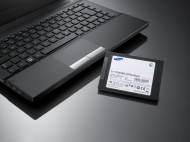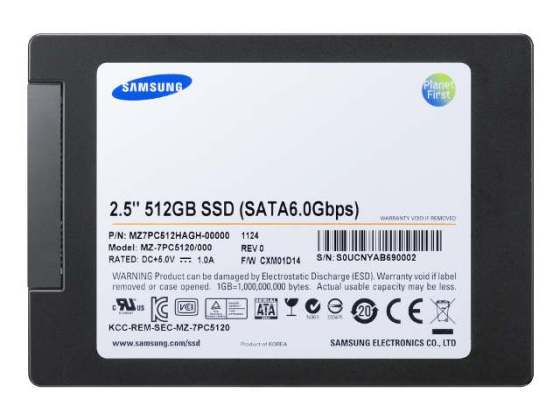Samsung SSDs with SATA revision 3.0 interface hit volume production
 Samsung Electronics announced volume production of solid state drives (SSDs) which are compatible with Serial ATA (SATA) Revision 3.0 interface – an interface which is two times faster compared to SATA 3 gigabits per second (Gb/s) based technology. With data transmissions at 6 Gb/s, Samsung expects their new high-speed SSDs to be installed into upcoming high-performance OEM notebooks and tablets.
Samsung Electronics announced volume production of solid state drives (SSDs) which are compatible with Serial ATA (SATA) Revision 3.0 interface – an interface which is two times faster compared to SATA 3 gigabits per second (Gb/s) based technology. With data transmissions at 6 Gb/s, Samsung expects their new high-speed SSDs to be installed into upcoming high-performance OEM notebooks and tablets.
“Samsung’s new lineup of advanced SSDs will raise the performance bar to the next level for ultra-slim notebooks and tablets and accelerate growth of the market for high-performance SSDs”, said Wanhoon Hong, executive vice president, memory sales & marketing, Device Solutions, Samsung Electronics. “The industry is expected to quickly embrace SATA 6 Gb/s-based SSDs, which also will help increase market interest in 256GB and higher densities significantly.”
Sample production of the SATA 6Gb/s 512GB SSDs began in May, with volume production initiated earlier this month. According to Samsung claims, SATA 6Gb/s SSD shortens system boot-up time to about 10 seconds, while its high-performance allows users to download up to five DVD video files in less than a minute.
The new SSD doubles the performance of a SATA 3Gb/s drive, with sequential read speeds of 500 megabytes per second (MB/s) and sequential write speeds of 350MB/s. The drive also features the industry’s highest level of security, which uses an AES 256-bit encryption algorithm to protect personal or corporate data from unauthorized access.
Samsung’s high-performance SATA 6Gb/s (PM830 series) SSDs are going to be available in 512GB, 256GB and 128GB densities. The 512GB SSD utilizes Samsung’s most advanced 20 nanometer (nm) class 32Gigabit multi-level cell (MLC) NAND memory chip incorporating the toggle DDR interface. A proprietary NAND controller facilitates exceptional performance levels that take full advantage of the toggle DDR architecture and the SATA 6 Gb/s interface.
Samsung hasn’t announced the prices of their high-performance SSD drives, but according to a market research firm IDC, the global outlook for client-side SSDs is expected to grow ten-fold from 11 million units in 2011 to 100 million units in 2015. Among other claims from IDC, the use of NAND in 256GB SSDs is expected to grow from 19 percent of all NAND used in SSDs in 2011 to 42 percent in 2015, and the demand for 512GB SSDs is expected to grow from a 0.3 percent portion in 2011 to eight percent in 2015.
Potential growth of SSD usage will be determined by the biggest obstacle of global switch to SSDs – the price which is currently around 12 times higher compared to Hard Disk Drives (HDDs). Although there are claims SSDs are less reliable compared to HDDs, today’s SSDs have a Mean Time Between Failures (MTBF) of 2,000,000 hours (more than 228 years). The technology does have a limited amount of writes it can perform, but it is able to sustain about 40 years of non-stop writing before they would start failing.










Leave your response!